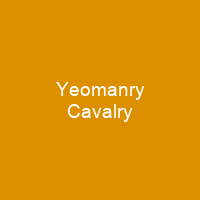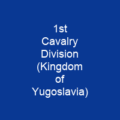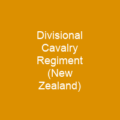The Yeomanry Cavalry: A Historical Journey
Imagine a time when Britain faced the threat of invasion and insurrection, and the government turned to volunteers for defense. The Yeomanry Cavalry, established in the late 18th century, was one such volunteer force. These mounted soldiers were not just cavalry; they were the backbone of local security and a symbol of national pride.
The Formation and Early Days
In 1793, France declared war on Great Britain, causing near panic in London due to its insufficient military forces. The regular British Army and militia were deemed ineffective or untrustworthy, leading the government to turn to volunteers for bolstering defenses. This led to the creation of the Volunteer Corps, including the Gentlemen and Yeomanry Cavalry.
Recruitment and Social Composition
The yeomanry was an exclusive organization composed of landholders, tenant farmers, professionals, tradesmen, and skilled craftsmen. Officers were appointed by royal commission, making it a social elite. Members were paid while embodied and subject to military law in the event of invasion.
From Civil Unrest to National Defense
The yeomanry played a dual role as mounted police until the mid-19th century. They were called out during treason trials, food riots, and enclosure protests. By 1801, the yeomanry was 21,000 strong but declined after the Peace of Amiens in 1802.
Notable Incidents
The Peterloo Massacre in 1819 saw the Manchester and Salford Yeomanry charge into a crowd of 60,000 people, resulting in up to 17 deaths and 650 wounded. This incident polarized public opinion, with Radical outlets framing it as murder and massacre, while establishment outlets defended the yeomanry.
The Decline and Transformation
With the rise of civilian police forces and renewed invasion scares, the focus of the yeomanry shifted to national defense. However, government committees failed to address issues, leading to a decline in strength. The yeomanry found new relevance as mounted infantry during the Second Boer War and became part of the Imperial Yeomanry before ceasing to exist as a separate institution in 1908.
World Wars and Beyond
Yeomanry regiments fought in both World Wars, maintaining their heritage through four yeomanry regiments of the British Army Reserve. During the Second World War, they saw action in armor, artillery, and anti-aircraft roles, with the last cavalry action on horseback taking place in Syria in 1941.
Legacy and Modernity
The Royal Yeomanry performed an armoured reconnaissance role after WWII, before converting to armour-based roles alongside other yeomanry regiments in the 21st century. The legacy of the yeomanry lives on through their continued service and the rich history they have left behind.

The yeomanry’s journey from volunteer cavalry to mounted infantry and beyond is a testament to the adaptability of military forces. Their role in both civil unrest and national defense highlights their significance during tumultuous times. As we look back, it’s clear that the yeomanry played a crucial part in shaping British history.
You want to know more about Yeomanry Cavalry?
This page is based on the article Yeomanry Cavalry published in Wikipedia (retrieved on November 29, 2024) and was automatically summarized using artificial intelligence.







